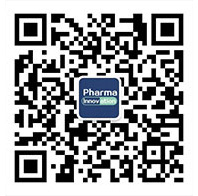Analysis of the second AstraZeneca lupus phase 3 randomized controlled trial (RCT) of the human monoclonal antibody anifrolumab using more flexible endpoints than those in the first RCT showed significant benefits for many patients, particularly those with high expression of type 1 interferon genes.
Eric Morand, MD, and colleagues report in an article published online December 18 in the New England Journal of Medicine that patients treated with anifrolumab had significantly more responses as measured by the composite British Isles Lupus Assessment Group (BILAG)–based Composite Lupus Assessment (BICLA) criteria. There was also a significant increase in the number of patients who were able to reduce the use of prednisone to less than 7.5 mg/day and a near doubling of the number of patients who experienced a 50% or greater decrease in skin disease compared with patients who received placebo.
"The current trial...showed a significant effect on the primary end point of a response at week 52 defined according to the British Isles Lupus Assessment Group (BILAG)–based Composite Lupus Assessment (BICLA)," lupus experts Jane E. Salmon, MD, from the Hospital for Special Surgery and Weill Cornell Medicine, and Timothy B. Niewold, MD, from the Colton Center for Autoimmunity, New York University School of Medicine, both in New York City, write in an accompanying editorial.
The incidence of a BICLA response was 16.3 percentage points higher with anifrolumab (at a dose of 300 mg every 4 weeks for 48 weeks) than with placebo (47.8% and 31.5%, respectively).
Salmon and Niewold ask, "How good is good enough?" for a successful trial of lupus treatment. They go on to argue that, given the need for new lupus therapies, regulators should allow more flexibility in trial design, such as requiring just one of two endpoints (the SRI [Systemic Lupus Erythematosus Responder Index] or the BICLA) to demonstrate efficacy.
This concern was highlighted by the fact that in the TULIP-1 study, there was not a significant effect on the primary endpoint of SRI. Efficacy on SRI requires a reduction in total score on the Systemic lupus Erythematosus Disease Activity Index (SLEDAI) and incorporates changes in serologic variables. The SLEDAI also captures only complete responses, whereas the BILAG index captures partial responses. TULIP-1 failed to meet its primary efficacy endpoint but did show apparent efficacy on several secondary endpoints, including the BICLA response.
TULIP-2 had an almost identical design (randomized, double-blind, parallel-group study of patients with moderately to severely active SLE who were randomly assigned in a 1:1 ratio to receive either anifrolumab 300 mg intravenously [n = 180] or placebo [n = 182] every 4 weeks for 48 weeks).
Before the TULIP-2 data were unblinded, the researchers amended the trial protocol to make BICLA response the primary endpoint. BICLA requires reduction in moderate to severe baseline disease activity, no worsening in any of the nine organ systems in the BILAG index, no worsening on the SLEDAI, no increase of 0.3 points or greater on the Physician Global Assessment of disease activity (scale from 0 [no disease activity] to 3 [severe disease]), no discontinuation of the drug, and no use of restricted medications.
Secondary endpoints in TULIP-2 included BICLA response in patients with high vs low interferon gene signature at baseline. Anifrolumab inhibits all signaling through the type 1 interferon receptor, activation of which is a central pathogenic mediator of SLE and is associated with overexpression of hundreds of gene transcripts induced by type 1 interferon (the "type 1 interferon gene signature").
This was determined by quantitative PCR-based testing of whole blood for the expression of the genes IFI27, IFI44, IFI44L, and RSAD2.
Other secondary endpoints were reductions in glucocorticoid dose; severity of skin disease, as assessed by the Cutaneous Lupus Erythematosus Disease Area and Severity Index (CLASI); swollen and tender joints; and annualized flare rate.
Endpoint analysis at week 52 showed that the BICLA response rate was 47.8% with anifrolumab compared with 31.5% with placebo (P = .001). Of those patients with a high interferon gene signature, 48.0% responded to anifrolumab, vs 30.7% for patients who received placebo (P = .002).
For those with low interferon gene signature, responses were similar with anifrolumab and placebo.
Among patients taking ≥10 mg/day of prednisone at baseline, 51.5% achieved sustained reduction to ≤7.5 mg/day with anifrolumab, vs only 30.2% with placebo (P = .01).
Among patients with active skin disease (CLASI ≥10 at baseline), anifrolumab produced a 50% reduction in CLASI score at week 12 in 49.0% of patients, vs 25.0% with placebo.
Anifrolumab was not associated with significant changes in tender and swollen joint counts or in flare rate.
"The current trial, TULIP-2, used a primary end point that was a secondary end point in TULIP-1, the first phase 3 trial of anifrolumab," the authors state.
"The TULIP-2 trial showed that anifrolumab (at a dose of 300 mg administered intravenously every 4 weeks) in patients with active SLE was superior to placebo in the achievement of composite end points of disease-activity response, as well as reduction in the glucocorticoid dose and reduction in the severity of skin disease, over a period of 52 weeks. This trial was not designed to determine durability of effect or risks beyond 52 weeks."
Salmon and Niewold comment that so far, only one drug (belimumab) has been approved for SLE on the basis of RCT data and that patients continue to suffer from adverse effects associated with glucocorticoids and immunosuppressive drugs.

